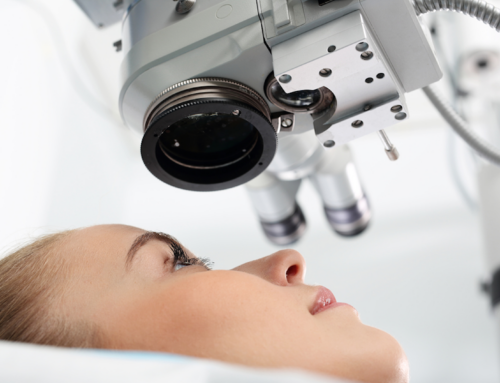 Blepharoplasty, also known as eyelid surgery, is typically done to either remove “bags” from underneath the eyes or to remove excess skin from the upper eye lid that’s blocking your field of vision.
Blepharoplasty, also known as eyelid surgery, is typically done to either remove “bags” from underneath the eyes or to remove excess skin from the upper eye lid that’s blocking your field of vision.
Here are some common questions patients have about the surgery — and the personal concerns that might lead up to it.
- What causes droopy eyelids? As you age, your skin begins to lose elasticity. Gravity is also constantly pulling us down. Both of these factors contribute to excessive skin collecting on the upper and lower eyelids. Additionally, there is fat that cushions your eyeballs from your skull, held in place by a thin membrane. As we age, that membrane weakens, allowing the fat to push through into the lids.
- Is it genetic? Baggy or droopy eyelids can be genetic. You may have noticed that your mom’s or dad’s eyelids became more pronounced or “baggier” as they aged. This can also indicate that baggy or droopy eyelids will be something you’ll encounter at some point, too.
- Why do patients choose blepharoplasty? Typically, the surgery is done for cosmetic reasons. Removing the excess tissue from around your eyes can make you look younger and more alert. Sometimes, a major event is the catalyst for the procedure, such as a son’s or daughter’s wedding. Other times, it’s a decision that’s made out of necessity, especially if the excess skin has begun to hang over your eyelashes, blocking your vision.
- Is covered by insurance? It is considered a medical necessity — and is, therefore, covered by insurance — if the eyelids block your field of vision. Otherwise, it’s considered a cosmetic procedure and is not covered by insurance.
- What can I do to prepare for blepharoplasty? The best way to prepare for blepharoplasty is to know your medical history and set realistic expectations. Dr. Benaim will ask you questions about any current or past health conditions that can impact your eyes, such as dry eyes, glaucoma, or diabetes. Based on that information, he’ll determine whether you’re a good candidate for blepharoplasty. If so, he’ll walk you through the process and possible outcome. Prior to surgery, Dr. Benaim and our team will conduct a thorough examination and visual field test, take pre-operative photos, and have you meet with our surgical coordinator, who will schedule your surgery.
- How long does it take to recover? For the first two weeks after surgery, you will have substantial facial swelling and bruising. As your body begins to heal, the swelling will go down and the bruises will start to fade away. The healing process can sometimes take several weeks, so make sure to keep that in mind when planning your procedure.
 New Address:
New Address:



